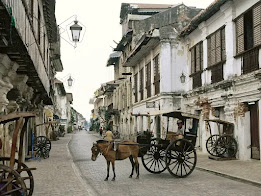Vigan
used to be a quiet town, known as a municipality, where people lived simple and
peaceful lives. It was famous for its old Spanish houses, cobblestone streets, and
the Kalesa was a common sight, and life moved at a slower pace. People took
pride in their small community, where everyone knew each other, and their
culture was passed down through generations. Even though it was small, Vigan's
people were proud of their history and strong sense of tradition, truly defined
their daily lives.
When Vigan became a city, things started to change in both big and small ways. There were new structures, more visitors came to see the place, and the roads were more crowded with new shops and activities. While new modern structures such as malls and restaurants emerged, the government made sure to protect the historical parts of Vigan, such as Calle Crisologo, where the Spanish-era houses remain, were preserved. New roads and schools were constructed, and the city grew and provided more opportunities for its people. Despite these changes, the heart of Vigan—the people and their culture—remained strong.
Reference/s:
VIGAN
CITY. (n.d.). VIGAN CITY. https://kaivigan.home.blog/
Vigan Welcome and farewell Arch - Wikimapia. (n.d.). https://wikimapia.org/7274029/Vigan-Welcome-and-Farewell-Arch






No comments:
Post a Comment